Navigation auf uzh.ch
Navigation auf uzh.ch
What is VPN? UZH members who are outside the UZH buildings or in their home office have secure access to the UZH network via the "UZH Virtual Private Network" (VPN). This allows you to access systems that are only accessible within the UZH network. VPN also encrypts public connections. More...
Important: Authentication is not equal to encryption. On public networks you authenticate with a password, however, data traffic, that is not additionally encrypted, can be read by the operators of the networks or other persons in the same network.
You will find the relevant instructions under the following drop-down menus.
Note:
Please note that you must have admin rights on the device in order to fully install and configure the VPN client.
If you have difficulties accessing e-resources (databases, journals), you can alternatively use the browser-based solution EZproxy (instructions (german) (PDF, 1 MB)).
If you are using a mobile device, please consult the instructions under the section VPN on mobile devices (iOS/iPadOS & Android).
Information on recurring questions and problems can be found on our FAQ page.
Installation via the UZH Sharepoint page:
Go to https://t.uzh.ch/1Bg and log in with your personal UZH login data.
Open the folder with the latest version and then that of your operating system (for Windows "Windows 64-bit" / for Mac "Mac OS").
Download the two files.
After downloading, first execute the "PulseSecureAppLauncher..." file and then the "PulseSecure..." file.
Allow/confirm each time during installation.
→ Once the installation is complete, the Ivanti Secure Access Client can be opened on the computer.
Click the + in the VPN client menu and enter the following information:
| Type: | 'Policy Secure (UAC) or Connect Secure (VPN)' |
| Name: | UZH VPN |
| Server: | https://remoteaccess.uzh.ch/vpn |
→ Click "Connect" and log in with your personal UZH login data, then the connection should be established.
Notes regarding macOS:
If you are asked to select a certificate during the installation/connection setup, you must select the "Kerberos" certificate.
During the installation, you will automatically be asked to confirm that Ivanti should be allowed to make changes to the computer/establish a connection. Simply follow the instructions. → Afterwards, this can be enabled via Apple menu > Privacy and security (Ivanti should already be available for selection there, click "Allow").
If you receive an error message of the type "Please enter a valid ICS URL" -> Please note the FAQ entry #02.
If it is not possible to establish a connection after installing the two downloaded files, it may be necessary to restart the device.
Disconnect:
macOS - via the icon in the menu bar (right-click > UZH VPN > Disconnect)
Windows - Call up the client via the icon in the taskbar and click on "Disconnect".
Re-establish the connection:
Open the Ivanti Secure Client and connect to UZH VPN.
Note:Managed (ger.: verwaltete) devices are computers provided by Central IT (ZI) on which security settings, basic software, updates and licenses are automatically installed and kept up to date by Central IT. Additional software can be installed via the software management application Softwarecenter .
For managed computers (Mac and Windows), the VPN software 'Ivanti Secure Access Client' ('Pulse Secure') is installed automatically. After launching the application, please select 'UZH VPN' and 'Connect'.
After starting the program (e.g. via the Windows start menu (Fig. 1, step 1)), please select the connection 'UZH VPN' and click 'Connect', for example ...
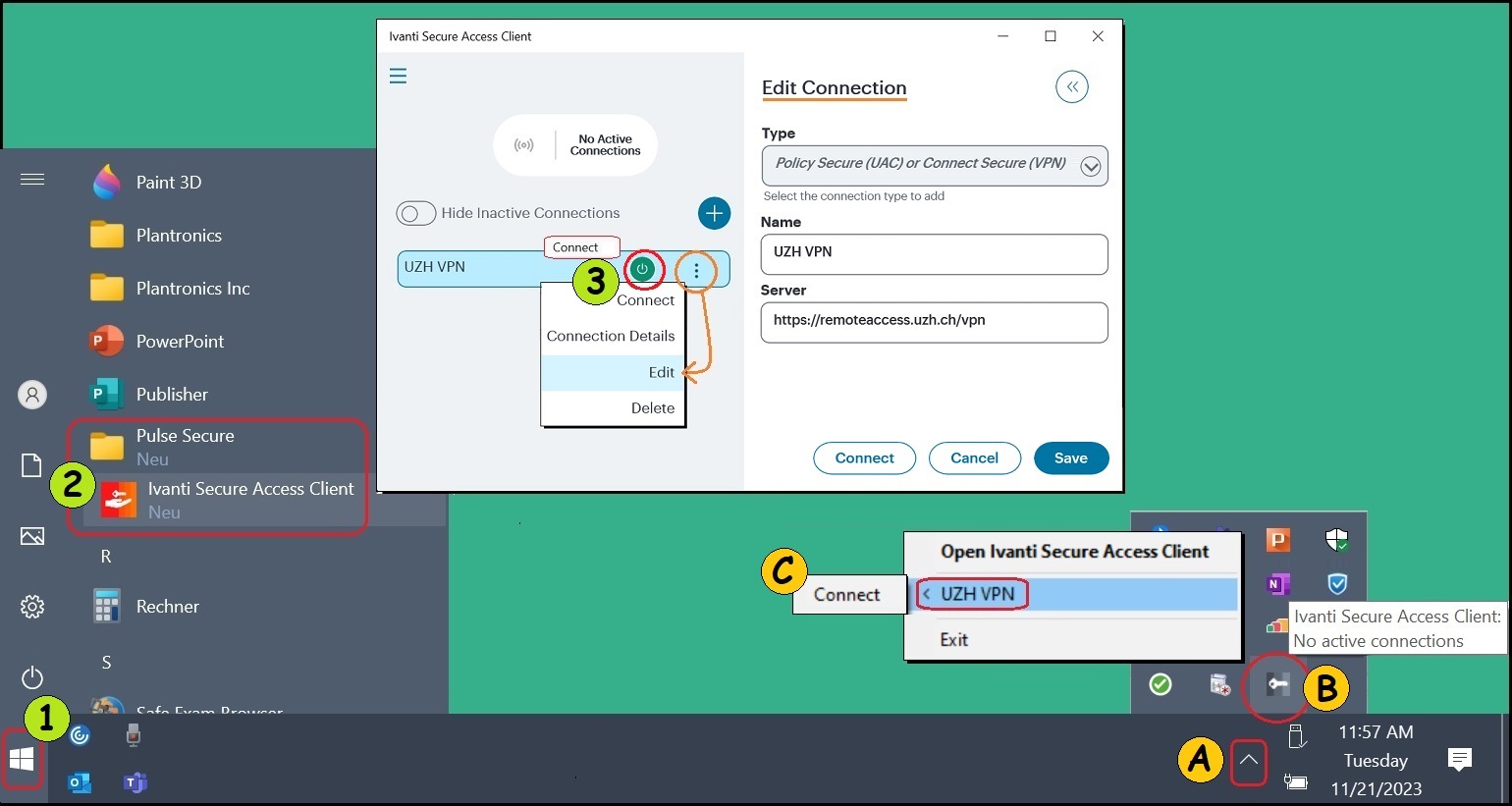
Note: During the pilot phase, the 'VPN - Ivanti Secure Access Client' ('Pulse Secure') app can be installed manually via the Software Center.
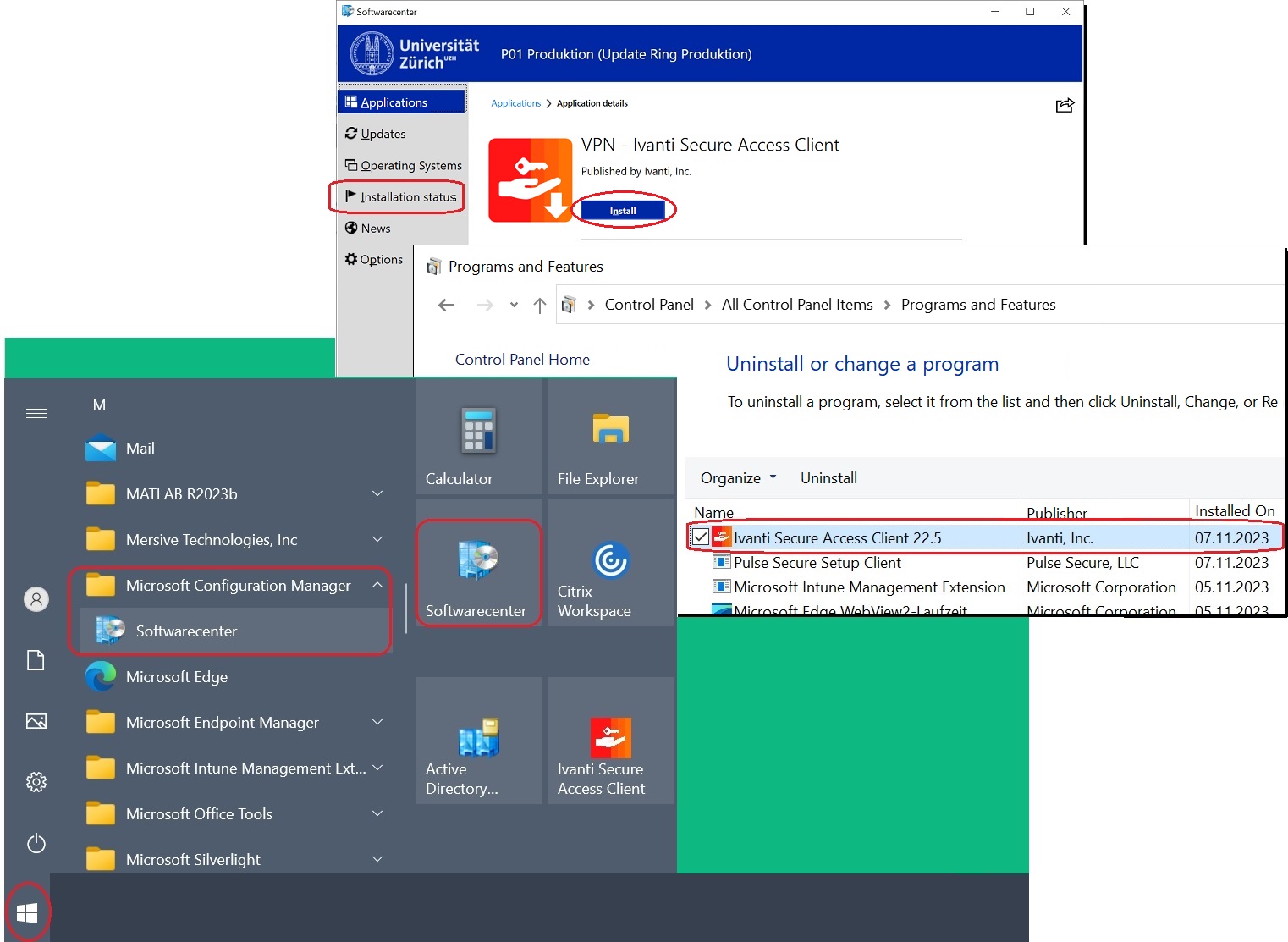
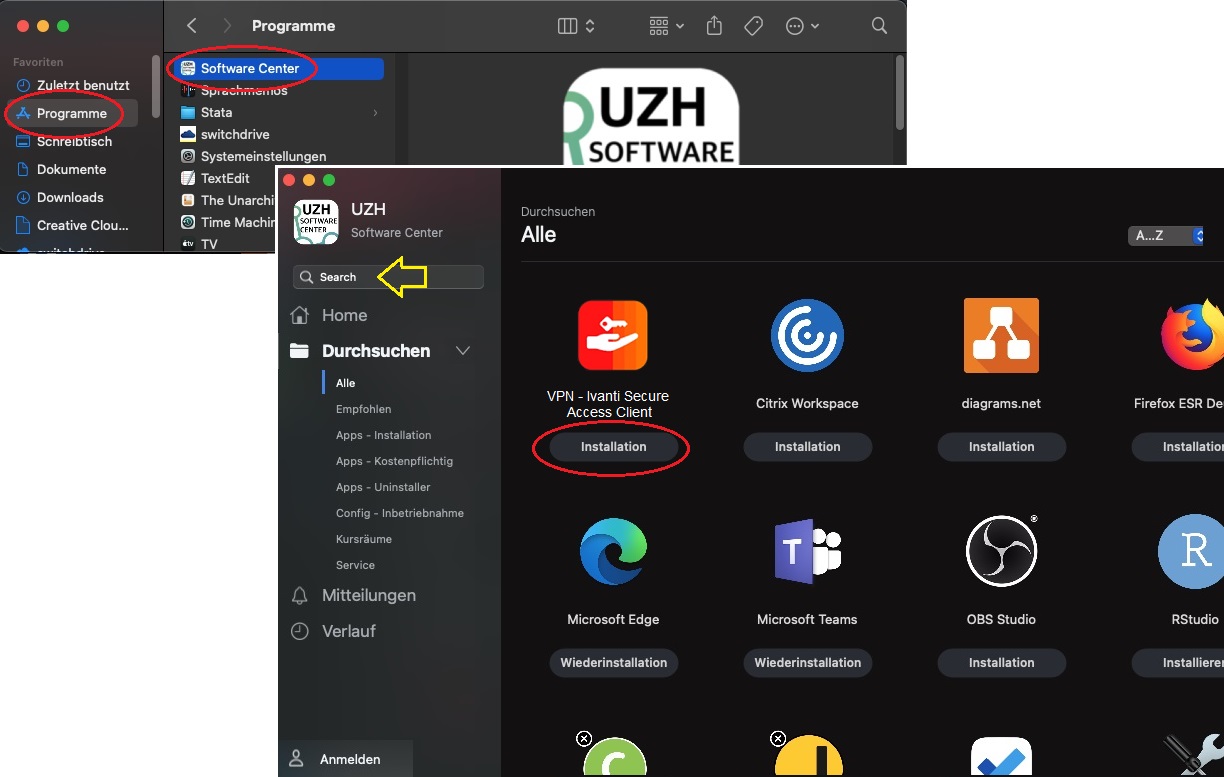
Unfortunately, Central IT cannot offer support for Linux computers. For this reason, please find below a model guide for Ubuntu.
See also How to setup and use Ivanti Secure Access Client (Linux)? and FAQ.
Please note:
On iPhones and iPads (or on devices that use iOS or iPadOS), access to e-resources licensed by UZH (e-journals, databases) via Ivanti VPN does NOT work for students. As an alternative, please use the browser-based access via EZ-Proxy (see FAQ #04).
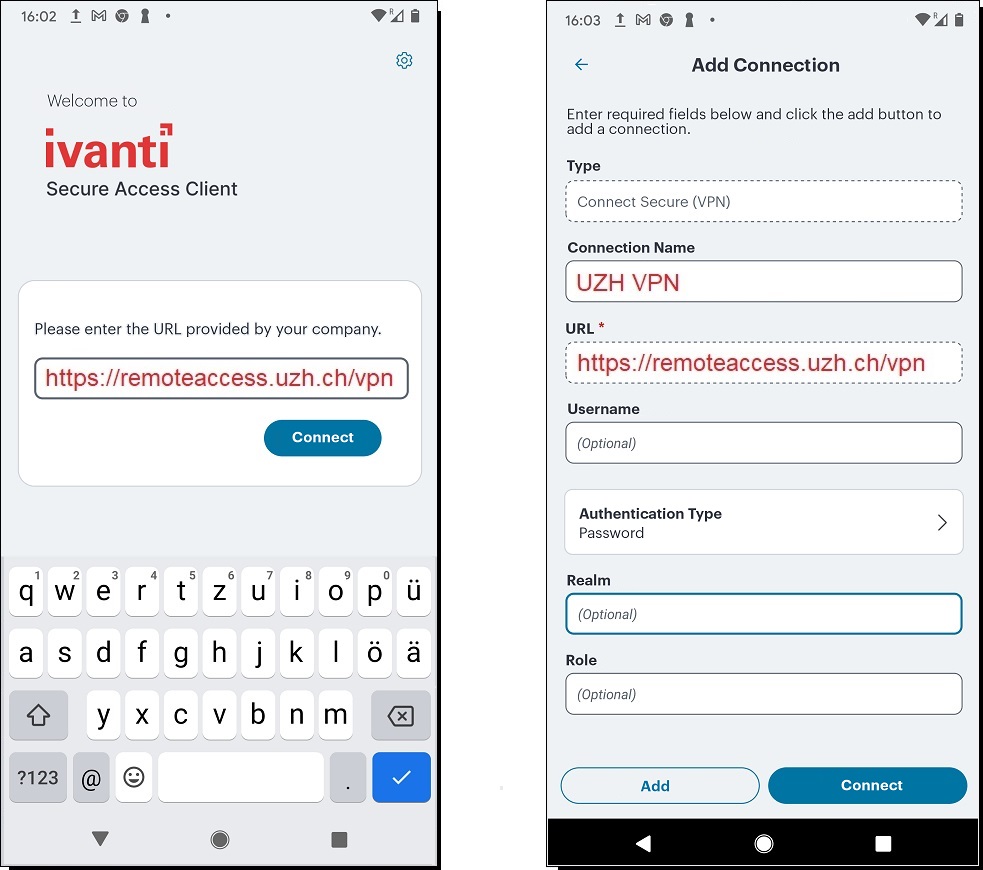
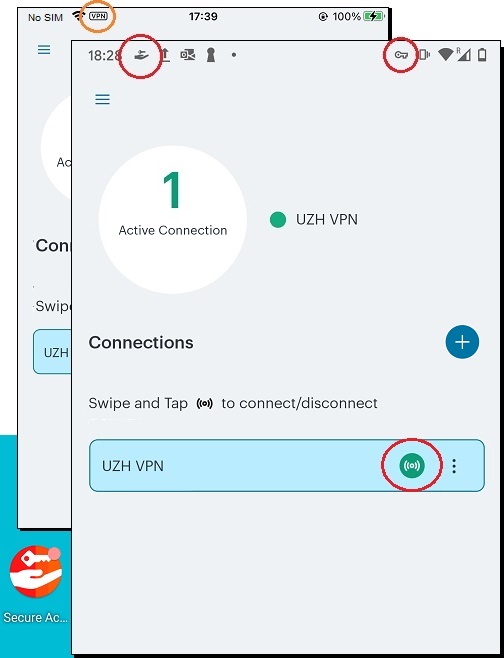
Requirements for using the UZH VPN:
Settings:
Hint:
Updates:
System requirements:
Ivanti Secure Access Client Supported Platforms Guide (pdf-Datei)
Ivanti Secure Access Client Hardware Requirements
Platform and Browser Compatibility